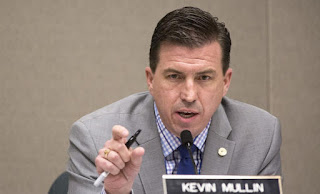On a 15-0 vote, the proposal, AB 214, was approved Tuesday by the Assembly Health Committee and sent to the Appropriations Committee for placement on the "consent calendar." Such a move could speed action on the bill.
Assemblyman Kevin Mullin, D-San Mateo, authored the bill, which is backed by Americans for Cures, the Palo Alto stem cell advocacy group created by Bob Klein, the first chairman of the $3 billion California stem cell agency.
The agency, known formally as the California Institute for Regenerative Medicine (CIRM), is also listed as a supporter of the legislation. Other supporters included Aivita Biomedical of Irvine, Ca, the California Life Sciences Association and the Miami Project to Cure Paralysis.
The CEO of Aivita is Hans Keirstead, a stem cell researcher formerly with UC Irvine.
No opposition was listed in the legislative staff analysis of the bill.
The measure provides $5 million to support the Roman Reed Act of 1999, named after a man who was paralyzed as the result of a spinal cord injury. Roman and his father, Don Reed, are long-time backers of the stem cell agency's work. The elder Reed is a vice president of Americans for Cures.
The legislative analysis carried this comment sourced to the bill's author:
"The previous allocations of approximately $15 million in state funding to the Roman Reed program was leveraged over five times that amount in new grants benefiting spinal cord research all across the state. It’s time to reinstate a modest amount of state funding so these efforts can continue."



